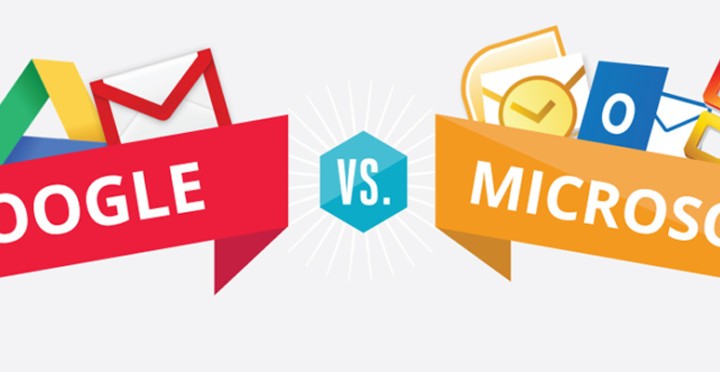The choice of productivity suite is a critical decision for New Zealand business owners because these are apps used by employees for core office work on a daily basis.
Microsoft’s Office 365 and Google Apps for Work are two main contenders and below we quickly see how the weigh up against each other.
Email/Calendar
Office 365
On most of Microsoft’s Office 365 plans, employees will have the option of using the desktop version of Outlook 2013 and/or a webmail version of Outlook
The option to take notes in meetings (using OneNote) and have them permanently associated with the event in your diary makes it easy to check agreed action points, for example. Finding free time slots (and even meeting rooms) for meetings with colleagues is easier with Outlook than Google Calendar.
Google Apps
Familiarity and speed is the biggest strength of Gmail. Employees will likely already have a personal Gmail account, and the pro version shares an almost identical design, without the adverts. Search is very quick and integration with other Google services is smooth and seamless. Attachment handling is also simple, with options to click for instant full-screen previews, edit in other Google Apps or save the file to Google Drive for later reference/sharing.
Word processing
Office 365
It’s very easy to create a lean and polished presentation with Office 365. The document templates on offer on Word 2013 are elegant and the graphics handling is rudimentary. You have the functionality to put frames or drop-shadows on photos and there’s quick and easy ways to colour alternate rows in tables.
Google Docs used to have a huge advantage when it came to collaborating on documents, but now the online version of Word allows multiple people to edit the same document simultaneously, too. We found Word Online a little more sluggish than Google Docs in this regard, however, and the ability to chat with colleagues as you work in Docs is a big bonus.
Google Apps
Google Docs is fine for the basic task of putting words on a page, business letters and rudimentary report writing. There’s now an attractive library of fonts to choose from, the in-line spellcheck works perfectly well (although check language settings aren’t set to the default US English). The option to quickly search photo libraries for royalty free photography and insert them in your documents is brilliant too.
However, Google Docs struggles with big, complex documents. Trying to open a graphics-laden, 70-page document with hundreds of tracked changes has been known to crash browsers.
Spreadsheets
Office 365
Nobody who’s used to battering numbers into a spreadsheet will be in any doubt about Excel’s capabilities. It’s the industry standard for a reason, and is probably the biggest single reason why Microsoft Office remains the default choice for most businesses. The addition of Excel Online to Office 365 subscriptions has merely strengthened Microsoft’s hand. It doesn’t have all the features of the desktop version, but it doesn’t mangle spreadsheets if there are features it can’t cope with, either.
Google Apps
Google Sheets remains a long way behind. Again, it’s perfectly capable of the basics, and unless someone sends you an Excel file stuffed to the gills with macros and advanced formatting, Sheets will likely open it and allow you to make sense of the figures.
Unfortunately, it lacks the real power tools. Pivot table support is still limited, plugins/integration for third-party business tools such as Sage are weaker or non-existent, the charting facilities are much poorer.
Presentations
Office 365
As with the word processing and spreadsheet tools, it’s the sheer sophistication of PowerPoint that gives it the edge over Google Slides. PowerPoint not only offers a vastly wider selection of templates from which to build your slide decks, but has many that pack a visual punch.
The real clincher is the presentation tools. Attach your laptop to a projector or external screen, and PowerPoint 2013 automatically puts the laptop screen into presenter mode, showing you (but not the audience) presenter notes, forthcoming slides and a running stopwatch.
Google Apps
Google Slides is still a useful, lightweight tool that can be used to deliver a straightforward presentation. It just struggles to stand up against the older and hence more powerful, PowerPoint.
Conclusion
These two alternatives have different philosophies for their productivity suites. Microsoft combines traditional desktop Office applications with browser-based versions of software such as Word, Excel and PowerPoint, as well as offering a host of other services to Office 365 subscribers; Google Apps is almost a pure online play, offering the vast majority of its services via the web browser or net-connected apps.
If you need any help in figuring out what’s right for you then feel free to call us today on 09 4448823 or send us an email at enquiries@advancedcomputers.co.nz and we can discuss the matter to ensure you stay connected.



